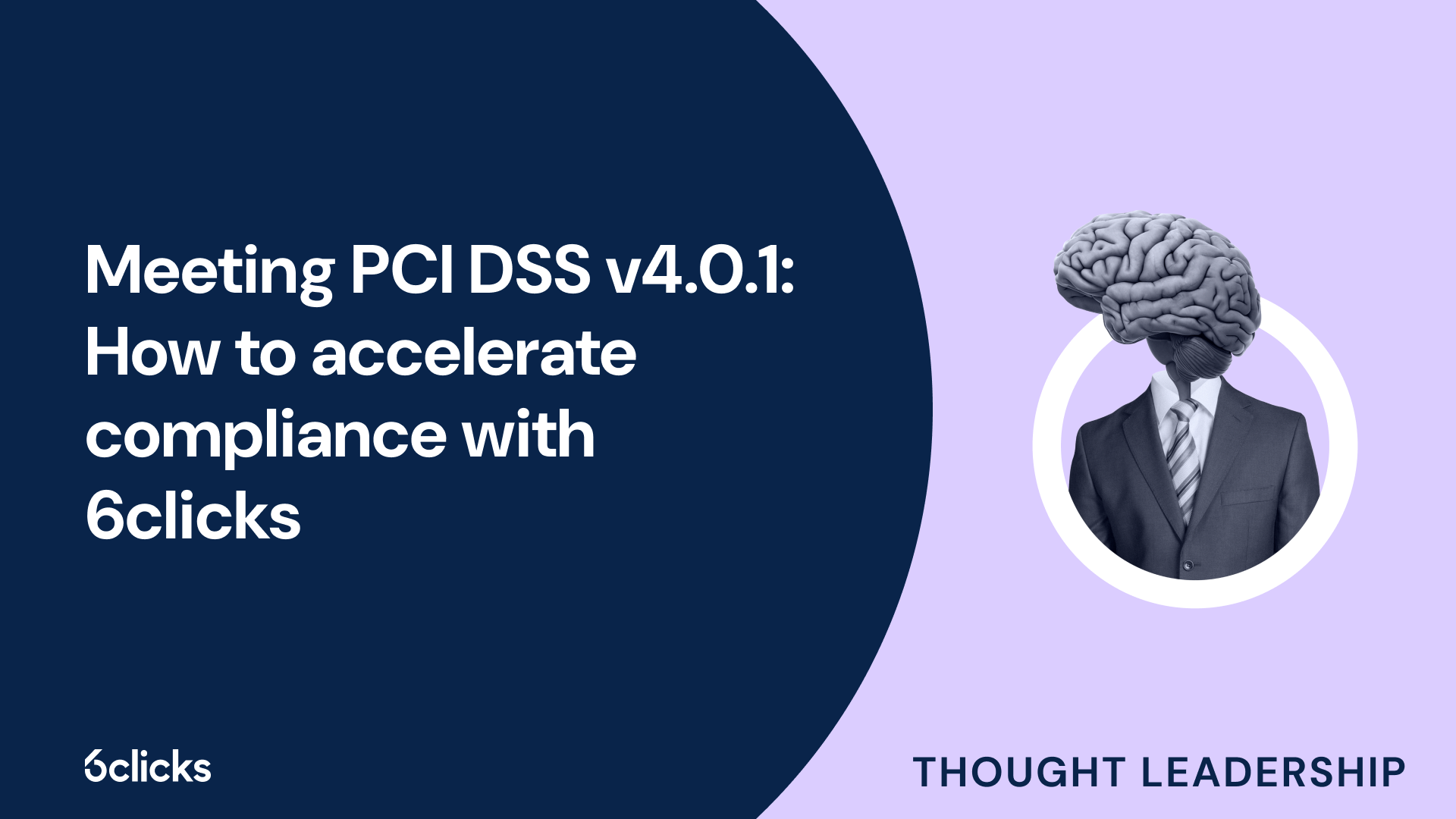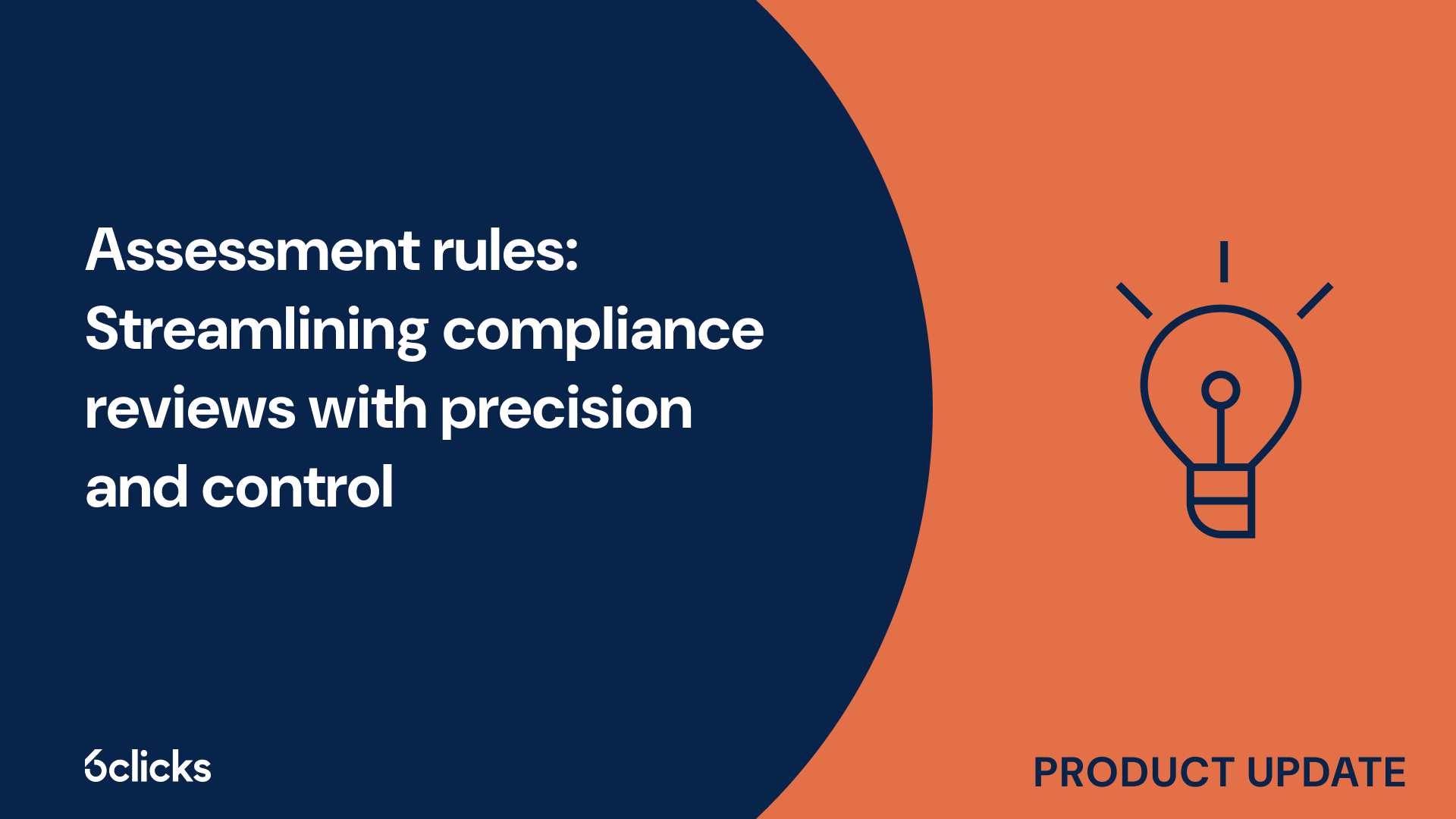Cyber resilience in 2025: Your smart guide to NIST CSF
Boost your organization's cyber resilience with this expert guide to the NIST Cybersecurity Framework. Learn to assess risk, improve security posture, and automate compliance with AI-powered tools.
-1.png?width=200&height=249&name=Group%20193%20(1)-1.png)
Cyber resilience in 2025: Your smart guide to NIST CSF
What is NIST?
The National Institute of Standards and Technology (NIST) is a renowned organization that provides guidelines, standards, and best practices to enhance cybersecurity across various sectors. NIST's cybersecurity framework is widely recognized and respected in the industry. The framework comprises a set of security controls, risk management processes, and implementation guidelines that help organizations mitigate cybersecurity risks. NIST's approach is based on a risk-based management strategy, aiming to align an organization's cybersecurity program with its business goals and objectives. NIST focuses on assessing and managing cybersecurity risks, implementing security controls, and establishing effective security management systems. NIST's cybersecurity framework is widely adopted by federal agencies, as well as organizations in various sectors, to safeguard their critical information and physical assets from cybersecurity threats.
What is ISO?
ISO, which stands for International Organization for Standardization, is an independent, non-governmental international standard-setting body. It develops and publishes standards for various industries to ensure that products and services are safe, reliable, and of good quality. ISO standards cover a wide range of areas, including technology, health and safety, environmental management, and information security.
ISO 27001 is the international standard for Information Security Management Systems (ISMS). It provides a systematic and risk-based approach for organizations to manage the confidentiality, integrity, and availability of their information assets. This standard helps organizations establish, implement, maintain, and continually improve their ISMS, ensuring that information security risks are identified, assessed, and appropriately managed.
ISO 27001 certification demonstrates that an organization has implemented a comprehensive set of controls to protect its information assets. It establishes a framework for the management of information security, enabling organizations to better manage security risks and comply with legal, regulatory, and contractual requirements.
Why Compare NIST and ISO?
When it comes to cybersecurity frameworks, two well-known options are NIST and ISO. Comparing these frameworks is important as it helps organizations evaluate their suitability and effectiveness in managing cybersecurity risks.
An important aspect to consider is the risk maturity level. NIST Cybersecurity Framework (CSF) is widely recognized for its risk-based approach, focusing on identifying, assessing, and managing risks. It provides a comprehensive set of security controls and guidelines tailored for different industries and organizations. On the other hand, ISO 27001 offers a systematic approach to risk management, ensuring the confidentiality, integrity, and availability of information assets.
Certification is another crucial factor to consider. ISO 27001 offers a globally recognized certification, demonstrating that an organization has implemented a robust information security management system. NIST CSF, although not offering a formal certification process, can be used as a framework for assessing and improving an organization's cybersecurity program.
Cost is also a consideration. NIST CSF is a free resource provided by the U.S. government, making it an accessible option for organizations of all sizes. ISO 27001, on the other hand, involves costs associated with certification audits, implementation, and ongoing maintenance.
Overview of NIST cybersecurity framework (CSF)
The NIST Cybersecurity Framework (CSF) is a widely recognized and highly regarded approach to cybersecurity. Developed by the National Institute of Standards and Technology (NIST), it provides a comprehensive set of guidelines and best practices for organizations to assess, manage, and improve their cybersecurity programs. The framework is designed to be flexible and adaptable, allowing organizations to customize it to their specific needs and industry requirements. It consists of five core functions - Identify, Protect, Detect, Respond, and Recover - which serve as the foundation for establishing a strong cybersecurity posture. The CSF also includes a set of implementation tiers, which organizations can use to gauge their cybersecurity maturity level and identify areas for improvement. With its risk-based approach and emphasis on continuous improvement, the NIST CSF is a valuable resource for organizations looking to enhance their cybersecurity resilience and effectively mitigate cyber threats.
Core functions of the CSF
The NIST Cybersecurity Framework (CSF) consists of five core functions: Identify, Protect, Detect, Respond, and Recover. Each function plays a crucial role in establishing and maintaining an effective cybersecurity program.
- Identify: The Identify function involves understanding and managing cybersecurity risks to business systems, assets, data, and capabilities. This includes identifying and prioritizing cybersecurity risks and documenting the necessary information to support risk management decisions.
- Protect: The Protect function focuses on implementing safeguards to limit or contain the impact of a cyber incident. It includes protection measures such as access controls, awareness training, and data encryption. The goal is to ensure the resilience of critical infrastructure and organizational assets.
- Detect: The Detect function involves the establishment and implementation of processes and activities that enable timely discovery of cybersecurity events. This function helps in identifying potential cybersecurity incidents by continuously monitoring systems, networks, and information flows.
- Respond: The Respond function addresses the development and implementation of appropriate activities to take action upon the detection of a cybersecurity incident. It includes incident response planning, incident analysis, and mitigation actions to reduce the impact and prevent further damage.
- Recover: The Recover function focuses on maintaining plans and processes to restore any capabilities or services that were impacted by a cybersecurity incident. The goal is to ensure that any disruptions caused by an incident are minimized, and normal operations are restored efficiently.
These core functions work together to create a risk-based approach that allows organizations to identify and mitigate cybersecurity risks effectively. The NIST CSF provides guidance and a framework for organizations to align their cybersecurity efforts with business goals and industry best practices.
Implementation tiers of the CSF
The implementation tiers of the CSF (Cybersecurity Framework) provide organizations with a way to measure their risk maturity and select activities for improvement. There are four implementation tiers: Partial, Informed, Repeatable, and Adaptive.
The Partial tier represents the lowest level of risk maturity. Organizations at this tier have limited awareness of cybersecurity risks and have not implemented any formal processes or controls. They have ad hoc cybersecurity practices that are applied inconsistently throughout the organization.
The Informed tier demonstrates an increased level of awareness and management of cybersecurity risks. Organizations at this tier have a basic understanding of their cybersecurity risks and have implemented some processes and controls to address them. However, these practices may not be consistently applied or well-integrated into the overall cybersecurity program.
The Repeatable tier indicates a higher level of maturity. Organizations at this tier have established processes and controls that are regularly followed and reviewed. They have a more formalized cybersecurity program with defined policies and procedures. However, these practices may still require further refinement and improvement to achieve optimum effectiveness.
The Adaptive tier represents the highest level of risk maturity. Organizations at this tier have a proactive and dynamic approach to cybersecurity. They continuously monitor and assess their cybersecurity risks, adapt their practices based on the evolving threat landscape, and apply lessons learned from previous incidents. They have a mature and well-integrated cybersecurity program that is aligned with business goals and objectives.
Each tier is characterized by the completeness and maturity of an organization's cybersecurity controls. As organizations progress through the tiers, they demonstrate a greater level of commitment to cybersecurity and a more comprehensive set of controls, policies, and processes. This includes activities such as risk assessments, incident response planning, employee training, access controls, vulnerability management, and third-party management.
By assessing their level of risk maturity and selecting activities for improvement based on the implementation tiers of the CSF, organizations can enhance their cybersecurity posture and better protect their systems, assets, and data from cyber threats.
Benefits of using the CSF
The NIST Cybersecurity Framework (CSF) offers numerous benefits to organizations seeking to enhance their cybersecurity posture. By adopting this framework, organizations can implement best practices that have been identified by a consensus of cybersecurity experts.
One key benefit of the NIST CSF is its emphasis on risk management and communication across the organization. It provides a common language and set of processes that enable organizations to better understand and prioritize their cybersecurity risks. This facilitates informed decision-making and resource allocation to mitigate those risks effectively.
Additionally, the NIST CSF offers flexibility and scalability. It can be tailored to meet an organization's specific needs and requirements, regardless of its size or industry. This adaptability allows organizations to implement the framework in a manner that aligns with their existing processes and structures.
Another advantage of using the NIST CSF is its ability to help organizations prioritize gaps in their current cybersecurity processes and policies. The framework provides a structured approach to assessing and addressing these vulnerabilities, ensuring that resources are efficiently allocated to areas of higher risk.
Organizations that adopt the NIST CSF also benefit from partnerships with government agencies. By aligning with this recognized framework, organizations can demonstrate their commitment to cybersecurity and establish stronger relationships with government entities. This collaboration can provide access to additional resources, information sharing, and support during incidents.
Overview of ISO standards for cybersecurity
ISO, or the International Organization for Standardization, has developed a series of standards for cybersecurity that provide guidance and best practices for organizations. These standards focus on ensuring the confidentiality, integrity, and availability of information and IT systems, as well as managing cybersecurity risks. The ISO standards for cybersecurity, specifically ISO/IEC 27001 and ISO/IEC 27002, offer a systematic and risk-based approach to establishing, implementing, maintaining, and continually improving an organization's information security management system. These standards outline a comprehensive set of controls and requirements that organizations can use to establish and maintain effective cybersecurity measures. The ISO standards also emphasize the importance of regular assessment and auditing to ensure compliance and identify areas for improvement. Implementing ISO standards can help organizations enhance their cybersecurity posture, demonstrate their commitment to security to customers and stakeholders, and meet industry and regulatory requirements.
International standard for information security management systems (ISO/IEC 27001:2013)
ISO/IEC 27001:2013 is an international standard for information security management systems (ISMS). It provides organizations with a framework to establish, implement, maintain, and continually improve their information security management system. The standard focuses on the confidentiality, integrity, and availability of information.
ISO 27001:2013 is globally recognized and provides organizations with a systematic approach to managing and protecting their sensitive information. It helps organizations identify and manage information security risks, implement appropriate security controls, and ensure compliance with industry regulations and standards.
To obtain ISO 27001 certification, organizations must undergo a certification process conducted by an accredited third-party audit. This involves a thorough assessment of the organization's security management systems, controls, and processes. Once certified, organizations benefit from improved security measures, enhanced customer trust, and a competitive edge in the market.
ISO 27001 certification also offers individuals an opportunity to become ISO 27001-certified professionals. This certification validates their knowledge and expertise in information security management systems, making them highly sought after in the job market. Certified individuals can contribute to their organization's overall security program, assess risks, implement controls, and ensure compliance with global standards.
International standard for information technology security techniques (ISO/IEC 27002:2013)
The International standard for information technology security techniques, ISO/IEC 27002:2013, provides organizations with a comprehensive set of controls and guidelines for implementing effective information security management systems.
ISO/IEC 27002 outlines best practices for managing the security of an organization's information assets, including processes, people, and technology. These controls cover a wide range of areas, such as risk assessment, access control, incident management, and physical security.
By following the guidelines of ISO/IEC 27002, organizations can establish a robust and systematic approach to protecting their sensitive information. This helps to mitigate cybersecurity risks, ensure compliance with industry standards and regulations, and build trust with customers.
ISO/IEC 27002 complements ISO/IEC 27001, the international standard for information security management systems. While ISO/IEC 27001 provides a framework for establishing an information security management system, ISO/IEC 27002 offers a more detailed and specific set of controls to implement within that framework.
By adopting ISO/IEC 27002, organizations can enhance their information security programs, strengthen their cybersecurity defenses, and demonstrate a commitment to protecting their valuable assets.
International standard for security controls For IT networks and systems (ISO/IEC 27033-1:2015)
ISO/IEC 27033-1:2015 is an international standard that provides guidelines and best practices for implementing security controls to protect IT networks and systems. It plays a crucial role in ensuring the security and integrity of organizations' information and data in today's digital landscape.
This standard is significant in cybersecurity as it helps organizations establish a comprehensive and effective security framework for their IT networks and systems. It addresses various aspects of network security, including network security principles, network security architecture, and network security management.
ISO/IEC 27033-1:2015 outlines the key components and requirements necessary for safeguarding IT networks and systems. It emphasizes the importance of identifying and managing network security risks, implementing appropriate security controls, and establishing a robust network security management system. It also provides guidance on network access control, network segmentation, network resilience, and incident response.
By following the guidelines and best practices outlined in ISO/IEC 27033-1:2015, organizations can enhance their cybersecurity posture and effectively mitigate threats and vulnerabilities. Implementing the standard's security controls ensures that IT networks and systems are protected against unauthorized access, data breaches, and other potential cyber risks.
Comparison between NIST and ISO standards for cybersecurity
When it comes to cybersecurity standards, two prominent frameworks that organizations often consider are the NIST Cybersecurity Framework (CSF) and the ISO/IEC 27001 standard. Both frameworks provide guidance on how to establish effective security measures and mitigate cyber threats. While NIST CSF focuses on risk management and is widely adopted by U.S. federal agencies, ISO/IEC 27001 offers a global benchmark for information security management systems. In this article, we will compare NIST and ISO standards for cybersecurity, examining their key features, benefits, and considerations. By understanding the strengths and limitations of each framework, organizations can make an informed decision that aligns with their specific cybersecurity requirements and goals.
Similarities between NIST and ISO standards
When it comes to cybersecurity risk management, both NIST and ISO standards provide robust frameworks that organizations can leverage to strengthen their security posture. The NIST Cybersecurity Framework (CSF) and ISO 27001 are two of the most widely recognized and utilized standards in the industry.
One of the key similarities between NIST CSF and ISO 27001 is their focus on the establishment of comprehensive cybersecurity programs. Both frameworks emphasize the identification, assessment, and management of cybersecurity risks through a systematic approach. They provide organizations with a clear understanding of their current level of security and help them establish security measures that are aligned with their business goals.
Furthermore, NIST CSF and ISO 27001 offer transferable control measures that can be implemented across various industry sectors. These controls encompass a wide range of areas such as asset management, access control, incident response, and continuous monitoring. By adopting these controls, organizations can effectively address common security risks and mitigate potential cybersecurity threats.
In terms of communication, both NIST CSF and ISO 27001 promote clear and consistent communication across multidisciplinary teams and external stakeholders. This includes senior management, IT personnel, third-party vendors, and regulators. By fostering open lines of communication, organizations can ensure that cybersecurity risks and control measures are clearly understood and effectively implemented throughout the organization.







